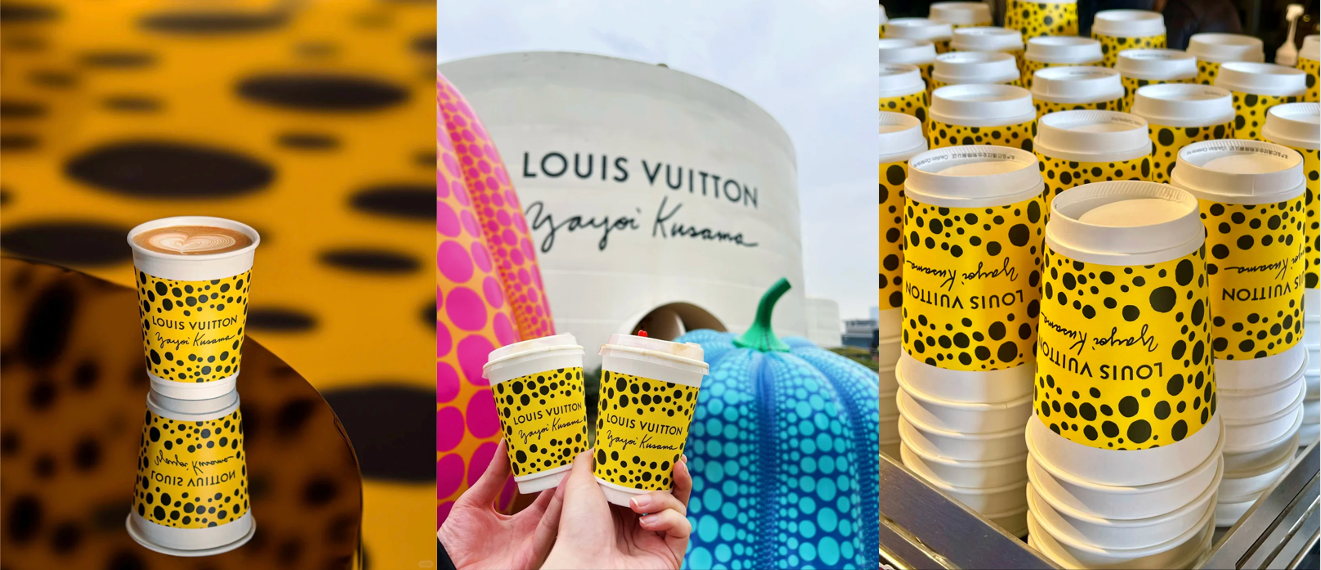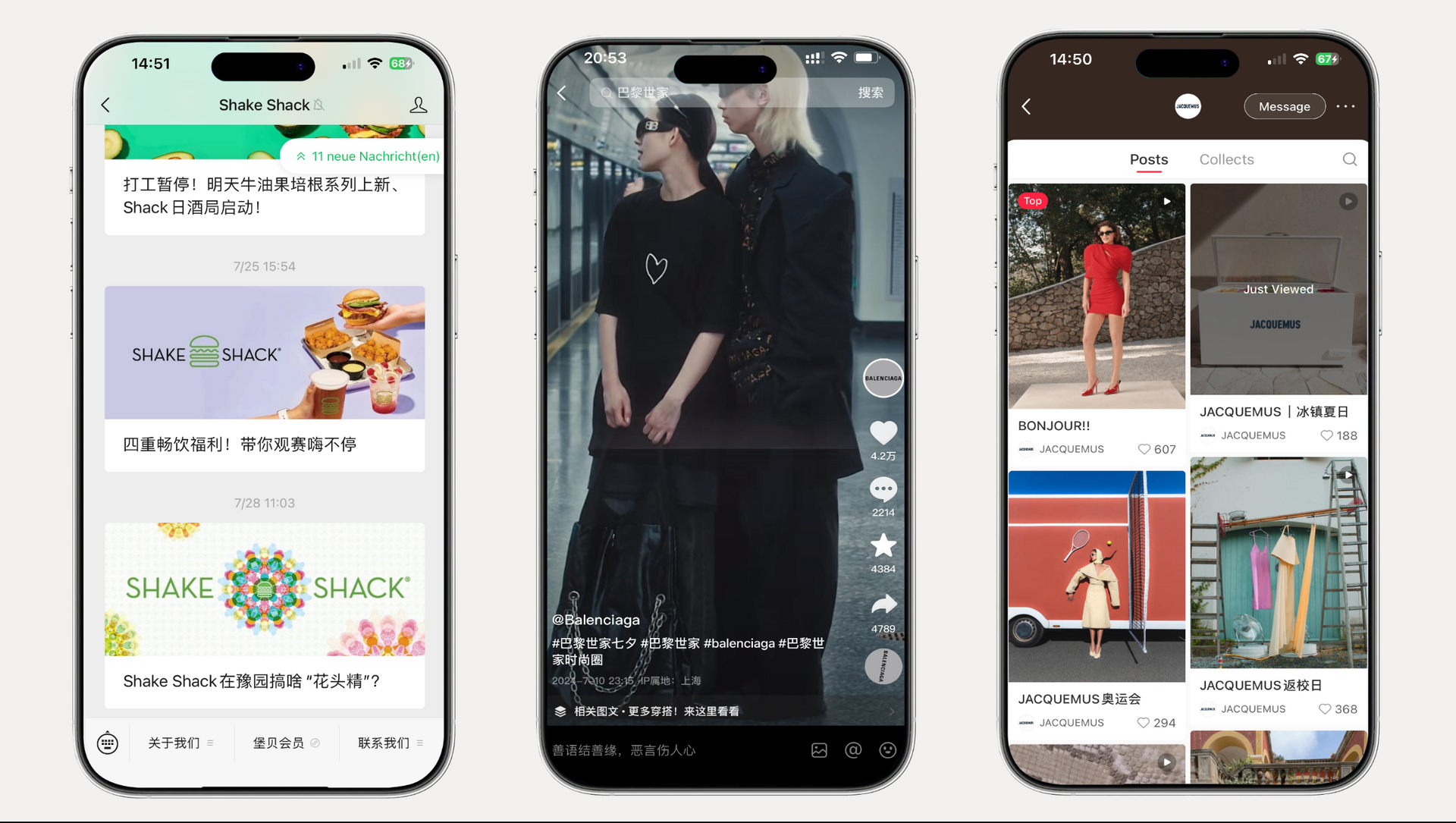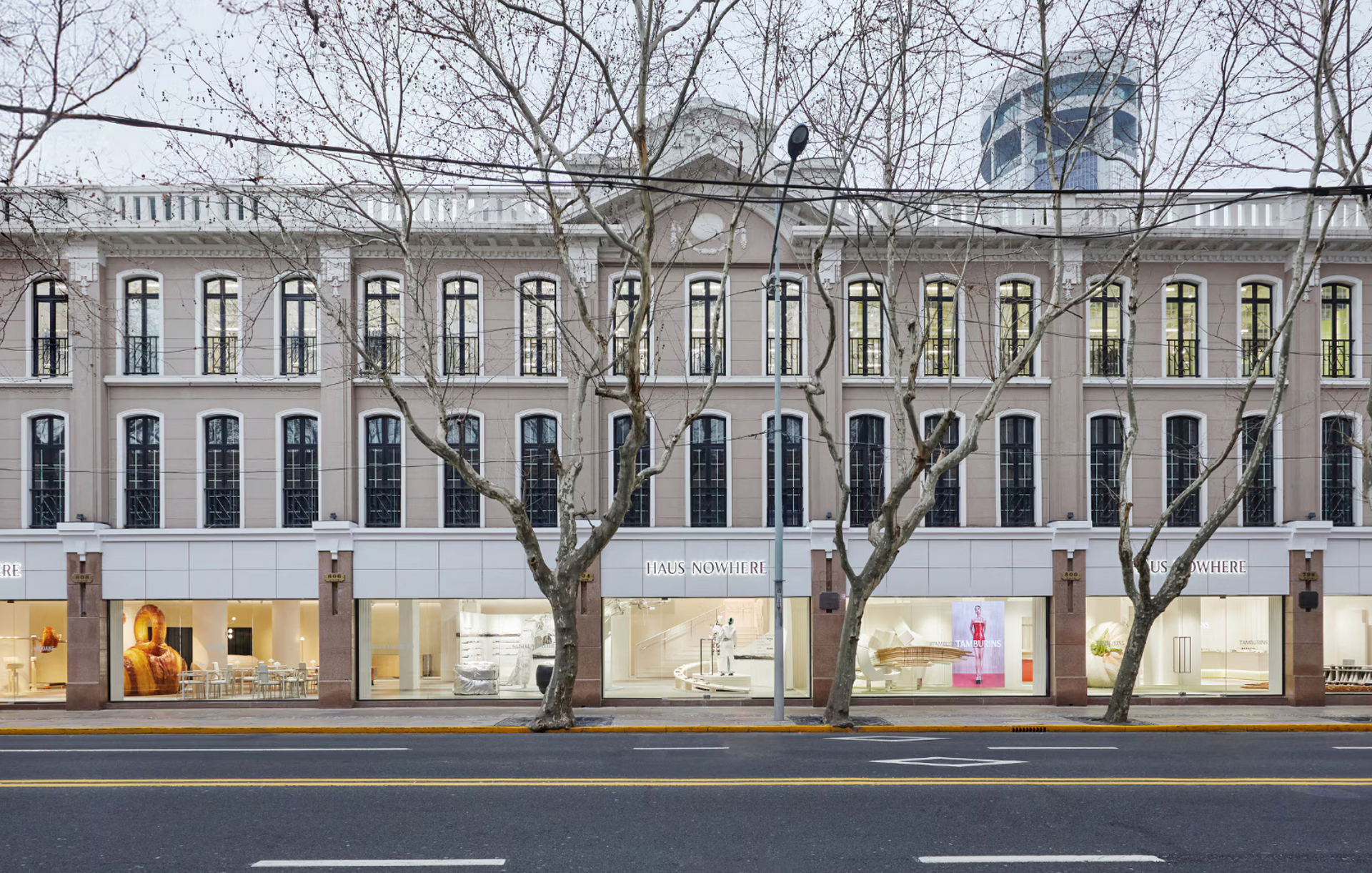Blog

Xiaohongshu (RED) has evolved from a China-based shopping guide into a global lifestyle hub with over 300 million monthly active users. RED has also become China's number one search engine app, and is gaining international attention recently, especially as “TikTok refugees” in the U.S. search for alternative platforms amidst TikTok’s uncertain future. For international brands and organizations, RED offers a powerful opportunity to establish credibility, visibility, and trust with a sophisticated audience. Why RED Matters for Everyone RED is a lifestyle-focused, user-driven platform where content and conversations shape public perception. This makes it invaluable for seeding awareness, whether for global institutions, luxury brands, or niche organizations entering the Chinese market. With its foundation in trust and user-driven content, RED positions organizations as leaders in their space. Here’s how institutions can leverage this unique platform for growth: Discovery : RED’s users actively seek fresh ideas, meaningful insights, and reliable recommendations. Whether exploring lifestyle trends, educational initiatives, or cultural content, users engage deeply with curated posts. Trust Through Content : Over 80% of posts are user-generated, creating an environment of authenticity. For institutions, this opens the door to connect with audiences by sharing real, relatable content that resonates with their values. A Gateway to China’s Urban Population : RED’s audience consists largely of female professionals and students in first- and second-tier cities, giving institutions access to influential and forward-thinking demographics. For example, a museum or cultural institution could use RED to showcase exclusive exhibitions, share behind-the-scenes content, or highlight global partnerships. This not only builds awareness but also sparks curiosity and fosters engagement with urban audiences interested in arts and culture. Why RED Is Essential for Brand and Institutional Growth RED provides a low-barrier entry point to build visibility in one of the world’s most competitive digital spaces. Its focus on authentic discovery and trust helps organizations gain traction with the right audiences. Seeding Awareness : RED allows organizations to position themselves as thought leaders or trusted entities. Whether through knowledge-sharing, success stories, or behind-the-scenes glimpses, it’s ideal for creating a lasting impression. Building Conversations : RED fosters meaningful interactions. Institutions can start discussions around shared values, research, or initiatives that align with the platform’s focus on thoughtful content. Leveraging Local Influence : RED’s ecosystem of influencers, including Key Opinion Leaders (KOLs) and Key Opinion Consumers (KOCs), amplifies visibility and credibility. Strategic partnerships with the right influencers can elevate messaging and build connections with targeted audiences effectively. Pro Tip : Many brands succeed by employing the KFS Strategy: a combination of Key Opinion Leaders (KOLs), Feeds, and Search Ads. This multi-pronged approach ensures visibility across key touchpoints. Advertising and Influencer Partnerships on RED RED’s advertising and influencer tools work best when integrated into a broader content strategy. Ads are not just about visibility but about positioning your institution or brand authentically within the platform’s ecosystem. In-Feed Native Ads : These ads appear seamlessly in users’ feeds, blending with organic content while carrying a “sponsored” tag. Institutions can use in-feed ads to promote educational content, events, or campaigns, aligning with the platform’s focus on meaningful interactions. Search Ads : By targeting specific keywords, these ads connect organizations with users actively seeking related content. Though they involve higher costs, they are highly effective for driving action and intent. Influencer Partnerships : RED’s 6,000+ KOLs and KOCs offer an array of collaboration opportunities. While micro-influencers charge between 2,000–5,000 RMB per post, top-tier KOLs can command hundreds of thousands of RMB or more per campaign, making influencer partnerships scalable to any budget or goal. RED’s Unique Role as a Seeding Platform Whether you’re a global brand or an institution promoting education, culture, or research, RED allows you to: Seed ideas and spark curiosity that lead to organic engagement. Build recognition and trust over time by prioritizing authenticity. Cultivate meaningful connections in China’s ever-evolving digital landscape. For example, a university could use RED to promote cultural exchange programs, showcase student testimonials, or highlight partnerships with Chinese academic institutions. This type of content resonates with RED’s audience, who value both inspiration and credibility. Final Thoughts RED is a space where any entity can amplify its visibility and credibility in China. By focusing on storytelling, authenticity, and community engagement, RED bridges the gap between global values and local aspirations, making it an invaluable tool for seeding awareness. 💡 At Think East, we specialize in strategy, account setup, and management of RED accounts for international institutions and brands. Interested in exploring RED for your institution or organization? Let’s build a tailored strategy to help you succeed. Stay tuned for our next post, and connect with us on LinkedIn or via email — we’d love to hear your thoughts and questions. See you next time!

When it comes to entering and staying in the Chinese market, few Swiss brands have navigated the landscape as thoughtfully as Weleda . A pioneer in organic skincare, Weleda first stepped into China two decades ago, long before "clean beauty" became a trend. The brand’s journey is a masterclass in adapting to evolving regulations, market trends, and consumer behavior while staying true to its core identity. 2 0 Years of Organic Presence Weleda initially found success in China with its baby care products - a category that is very popular with Chinese parents seeking safe, organic solutions for their infants. Offline stores stocked their products, and items like nappy creams quickly became household staples. However, 2015 marked a turning point. Stricter regulations in China requiring animal testing for product registration created barriers for international brands. Rather than retreating, Weleda pivoted. They leveraged cross-border e-commerce , an opportunity allowing products to be sold without animal testing, launching an online shop that would define the next chapter of their growth. A Strategic Shift to Cross-Border E-Commerce By 2016, Weleda’s nappy cream had become a big success, consistently ranking in the top three brands in the category , even against strong domestic competitors. Up until 2022, the brand’s reputation revolved around being a trusted provider of organic baby products. During this time, Weleda worked to encourage adult consumers to use organic skincare for themselves. Many Chinese adults perceived organic products as premium-priced and prioritized purchasing them for their children rather than for themselves. The pandemic marked a turning point, boosting awareness and interest in health and wellness products. This shift set the stage for Weleda to expand beyond baby care and build a foundation in organic beauty and cosmetics. Breaking Into the Beauty Category In 2021, Weleda launched its cosmetics line on Tmall Global , a crucial step into China’s competitive beauty market. They focused on body oils , tapping into an underserved niche. Products like Arnica Massage Oil and Birch Oil became wintertime favorites, particularly among women seeking relief from stress and muscle tension. By 2022, however, a seasonal challenge emerged: body oils saw limited demand during warmer months, as many Chinese consumers avoid oily products due to their skin type. Weleda adapted once again, promoting lightweight, high-performing alternatives like the Rosemary Hair Tonic . This product addressed widespread concerns such as hair loss and oil control , offering a watery texture that suited local preferences. The tonic resonated with stressed, image-conscious consumers, helping Weleda strengthen its position in the beauty category and expand its customer base to include male consumers and year-round buyers. Weleda's growth strategy in China offers a clear framework for success: Start with Cross-Border E-Commerce : Cross-border e-commerce offers an efficient, cost-effective entry point for international brands. Weleda’s consistent focus on this channel minimized risk while building a loyal customer base. Leverage Social Media for Seeding and E-Commerce : Platforms like RED are instrumental for educating Chinese consumers. Weleda seeded content featuring authentic reviews and product usage tips before moving to Douyin (TikTok) and WeChat for broader e-commerce campaigns. Focus on Core Products: Rather than launching a full product line, Weleda introduced one hero product at a time - nappy cream, body oils, and hair tonic - allowing them to build traction and loyalty organically. Collaborate Strategically : From working with KOLs to sponsoring events like the Montreux Jazz Festival in Suzhou or the Shanghai Fashion week, Weleda smartly balanced niche collaborations with broad market appeal. Sustainable Growth Over Hype: Unlike brands chasing instant fame, Weleda prioritized sustainable growth. With a medium-range price point, consistent product efficacy, and high customer retention, they’ve cultivated a loyal audience that champions the brand. Looking Ahead In 2024, Weleda continues to ride the wave of success. Revenue from the recent 11/11 shopping festival grew 15% year-over-year, a testament to the brand’s refined approach to e-commerce and social media marketing. Baby care remains the cornerstone of their business, but beauty products are rapidly gaining ground. As more Chinese consumers seek organic niche brands that align with their values, Weleda’s organic promise resonates deeply. Yet, challenges remain, from managing stock levels to competing with other international clean beauty brands. Still, Weleda’s 20-year journey in China proves that with patience, adaptability, and a sharp focus on consumer needs, brands can carve out a meaningful space in this complex market. At Think East, we keep you updated on the strategies brands use to succeed in China’s dynamic market. If you’re a new brand looking to enter the Chinese market or refine your approach, reach out to us. We’re here to help you craft a strategy that works for your goals. Stay tuned for our next post, and connect with us on LinkedIn or via email—we’d love to hear your thoughts and questions. See you next time!

In a city known for its fast-paced, consumer-driven culture, FREITAG has chosen a different path. Known for its bags crafted from recycled truck tarps, the Swiss brand is reshaping the typical retail experience in Shanghai. FREITAG’s approach is rooted in a sustainable, community-focused strategy that doesn’t push for quick sales. Through its first direct store, which opened in early 2023 near Jing’an Temple and close to a residential area, FREITAG is creating a space and a community that think differently about what it means to shop, connect, and consume. A Space with Purpose FREITAG’s location, set in a former towel factory that later served as a hostel, blends heritage with innovation. The renovation preserved much of the building’s original structure, incorporating its high ceilings and industrial features into an open, welcoming space designed for discovery. Each floor has a specific purpose: a repair station on the ground level, where customers can bring their FREITAG bags from anywhere in the world to for repairs. A process that can take up to six weeks, reinforcing the brand’s commitment to sustainable fashion. The first and second floors showcase collections. An essential feature of the store’s design is its vertical storage system, which reflects FREITAG’s focus on transparency and functionality. Products are displayed visibly, giving the space a straightforward, industrial layout that aligns with FREITAG’s minimalist aesthetic and commitment to openness and authenticity. On the top floor, the open rooftop serves as a garden and a social / community space, perfect for workshops and events. It’s a place for community building as much as for shopping. Provide Access, Rather than Ownership Rather than relying on heavy promotional events, FREITAG organizes initiatives that invite their community to engage in meaningful, sustainable practices. For example, during the annual 11/11 shopping festival in China, the biggest shopping day globally, the brand takes a stand by closing its checkout counters, both online and in-store. Instead, FREITAG hosts a S.W.A.P. (Shopping Without Any Payment) event, where customers are encouraged to bring in their pre-loved FREITAG bags to exchange for others. This unique approach reinforces FREITAG’s commitment to “provide access, rather than ownership,” and allows people to experience “new” bags through a circular exchange rather than traditional buying. By shifting the focus from transaction to interaction, FREITAG’s S.W.A.P. event builds community around reuse and resourcefulness, offering a meaningful alternative to consumer culture. Engaging Through Art and Cultural Exchange Earlier this year, Swiss artists Emma Casella and Alix Arto, alongside Chinese designer Zhang Yihan, hosted an immersive workshop at the FREITAG Store that brought together traditional craftsmanship and modern industrial techniques. With support from Pro Helvetia and the Rong Design Library, this workshop wrapped up a three-month residency aimed at reimagining wool’s role in contemporary design. Participants learned about the ancient art of felting, a skill deeply rooted in both Swiss and Chinese heritage, and explored innovative ways to adapt it for today’s sustainable practices. On the store’s rooftop, attendees created a large felt artwork, transforming raw wool through collaborative effort. This collective project allowed participants to experience the energy of shared creation, underscoring how traditional materials and techniques can inspire new applications and connections in a modern context. Balancing purpose and profit FREITAG’s strategy focuses on creating a community and setting a new standard for conscious consumerism in China. By combining heritage, functionality, and a commitment to sustainability, FREITAG has built a retail experience that resonates with a young, purpose-driven audience, offering an alternative to China’s often consumption-focused market. However, finding the balance isn’t always easy. FREITAG’s approach challenges the norms by not prioritizing mass sales, yet it has found a way to succeed by connecting with the right customers: those who value impact. This thoughtful strategy reflects how a brand can stay true to its roots while adapting to new markets. With their Shanghai space, FREITAG invites people to think about their own footprint, using its platform to spark dialogue and inspire change. It’s a compelling example of how retail can be reimagined as a space for engagement and reflection, transforming what it means to be a brand in today’s world. At Think East, we keep you updated on brand strategies like FREITAG’s, showcasing how purpose-driven approaches are shaping retail in China. We’re here to help brands craft strategies that resonate with Chinese audiences, building genuine connections that go beyond transactions. Stay tuned for our next post, and connect with us on LinkedIn or via email—we’d love to hear your thoughts and questions. See you next time!

Moncler’s 'City of Genius' was undoubtedly the standout event at last week’s Shanghai Fashion Week. More than just a fashion show, the brand created an entire world right next to the Huangpu River, blending fashion, art, design and music into a multi-dimensional experience. The event explored the theme of genius, posed as a question across social media: “What is Genius?” And the answer was manifested in a collaboration with 10 guest designers, including Rick Owens, Jil Sander, Willow Smith and A$AP Rocky. The scale was impressive, with over 8,000 guests attending in person and 57 million viewers online. The creative showcase extended beyond the global to the local, with Moncler partnering with famous Chinese artist Xu Bing, whose calligraphy work set the tone at the entrance. This mix of international influence and local engagement is exactly the kind of innovation luxury brands need to adopt, especially when operating in competitive markets like China. Why Shanghai Matters Moncler’s decision to host such a high-impact event in Shanghai is strategic. Despite a tough economic climate for luxury goods, China remains a key market. Asia accounts for nearly 50% of Moncler’s sales, and revenue was 11% up in China in H1 2024. Moncler outperformed competitors by continuing to innovate and engage with the local market. These figures speak to the continuing importance of China for global luxury brands. Shanghai’s status as a global fashion and innovation hub is no accident. For luxury brands, the city represents a unique intersection of creativity, commerce, and technology. Over the past decade, it has firmly established itself as a critical player in the luxury industry. The city’s fast-paced lifestyle, cosmopolitan population, and deep appreciation for both heritage and innovation make it a natural fit for luxury brands seeking to push boundaries. Moncler successfully created an experience that resonated with consumers who are increasingly sophisticated and selective. The Continued Importance of China for Luxury Brands While some brands may be facing challenges in China, the opportunity here is still enormous. Daniel Zipser, Senior Partner at McKinsey, has noted that Chinese consumers’ overseas luxury spending is gradually returning to pre-pandemic levels. This recovery in spending, coupled with the fact that China’s domestic luxury market is becoming more competitive, means that brands need to rethink their strategies. It’s no longer enough to rely on the traditional retail model. Instead, brands must innovate to capture consumer attention in both physical and digital spaces. Moncler’s 'City of Genius' shows that one of the most effective ways to do this is through highly curated, immersive events. The fusion of global and local elements in Moncler’s showcase highlights an important shift: luxury brands can no longer afford to treat China as a homogeneous market. Consumers here value cultural nuance, authenticity, and creativity, and they expect brands to deliver more than just products. Lessons for Other Brands There are clear takeaways from Moncler’s approach: Create Immersive Experiences: Moncler created a powerful brand experience by combining fashion, art and music into an immersive event. Consumers today are looking for experiences that engage them on multiple levels: visually, emotionally, and digitally. Moncler understood this and designed an event that was part art installation, part fashion showcase, and part cultural event. Leverage Digital Reach: Moncler's ability to draw in 57 million online viewers highlights the importance of digital amplification. In China, social media platforms like WeChat, Weibo, and RED (Xiaohongshu) are crucial for building brand awareness and community engagement. Mastering these platforms and leveraging user-generated content can significantly extend the reach of physical events. Global and Local Collaboration: The collaboration with Chinese artists like Xu Bing shows how to strike a balance between international and local partners. Brands that understand and incorporate Chinese culture authentically into their campaigns will resonate more deeply with consumers. Innovating in Times of Change While China’s luxury market may currently be facing challenges, Moncler’s success in Shanghai proves that the key to thriving in uncertain times is innovation and boldness. Brands that adapt quickly, especially those willing to think beyond the traditional ways of operation, will be the ones leading the way when the market cycle rebounds. For Moncler, this event was not just a marketing strategy but a reaffirmation of its commitment to innovation and creativity. As other brands take note, the future of luxury in China will depend on how well they can learn from these bold examples and continue to push boundaries. At Think East, we keep you updated on innovative brand strategies like this one and how they’re reshaping the luxury market in China. We also help you create and tailor your own brand strategy to navigate the unique landscape of China’s market, ensuring your brand connects with local audiences and drives long-term success. Stay tuned for our next post, and connect with us on LinkedIn or via email—we’d love to hear your thoughts and questions. See you next time!

Hi! Welcome back to our series on marketing in China! Today, we’re exploring Aranya, a thriving seaside destination in China that blends nature, architecture, and art into a creative community. What is Aranya? Established in 2013, Aranya is located on the coast of Qinhuangdao in Hebei. It integrates natural landscapes with modern architecture and a rich cultural scene, making it a popular travel destination. Aranya offers a wide range of experiences, with spaces like the Lonely Library, Dune Art Museum, Aranya Theater and more. Beyond its stunning architecture, Aranya also holds emotional and spiritual value, offering a peaceful escape for those looking to reconnect with themselves. Its name, associated with 'place of serenity,' emphasizes this philosophy. As a result, it has become a magnet for lifestyle brands looking to associate with tranquility, culture, and creativity. A Destination for Cultural Tourism and Art Aranya is a cultural hub. The community’s slogan, “Life can be more beautiful”, is reflected in every corner, from avant-garde installations to creative pop-ups. Its spaces are self-operated and welcome a variety of niche brands, both local and international. This same commitment to creativity and individuality extends to community building. With over 100 different interest groups ranging from photography to poetry and surfing, Aranya fosters deep connections among its residents and visitors. The result? A tightly-knit community that values creativity, aesthetics, and a slower pace of life. Aranya Theater Festival: A Cultural Milestone Launched in 2021, the Aranya Theater Festival has quickly become one of the most anticipated events on the Chinese cultural calendar. Held each June, it draws tens of thousands of spectators and showcases performances from over 50 theater groups. Its most iconic event, “Migratory Bird 300”, brings together 300 artists for 300 hours of continuous creation across multiple mediums, creating an immersive artistic experience. Breakthrough Brand Collaborations Aranya has also become a preferred venue for high-profile brand collaborations. In 2023, Louis Vuitton showcased its Spring/Summer menswear collection at Aranya, transforming the beach with giant sand sculptures. Valentino, in partnership with Pantone, turned the iconic Aranya chapel into a striking pink to celebrate its Pink PP collection. Shanghai lifestyle brand Tagi hosted viral pop-up events, including a massive apple installation that gained instant attention across Xiaohongshu. These collaborations have generated over 1.5 billion social media impressions, proving that Aranya is a powerful platform for brands to engage a sophisticated, culturally-savvy audience. Wrapping up, Aranya's success can be attributed to three main factors: Unique Integration of Nature and Architecture: Its contemporary architectural spaces, framed by beautiful seaside views, create a peaceful yet modern environment. Vibrant Cultural Scene : From festivals to art and commercial collaborations, Aranya offers a dynamic cultural atmosphere that keeps attracting visitors. Powerful Marketing : Viral moments like the “Lonely Library” alone achieved 600 million views on social media. Ongoing brand collaborations continue to drive its appeal as one of China’s hottest social media spots. At Think East, we keep you updated on cultural hubs like Aranya and the creative potential they offer brands. Stay connected with us on LinkedIn or reach out for more insights into China’s growing digital and social landscapes. Stay tuned for our next post, and connect with us on LinkedIn or via email—we’d love to hear your thoughts and questions. See you next time!

"The China Edition" series provides insights into Swiss companies that have entered the Chinese market, highlighting their challenges, strategies, and success stories within the world’s largest consumer market. In this first edition, we explore Alpine White, a Swiss oral care brand founded by brothers Reto and Alexander Wälchli in 2014. Alpine White offers a safer teeth-whitening alternative, developed with Swiss dental experts. By 2021, they have decided to enter the Chinese market, establishing a successful presence on T-Mall Global and key social media platforms like RED, WeChat and Weibo. And they have many more exciting plans to expand in China. This article explores their decision to enter the Chinese market early, the challenges they faced, and the lessons learned along the way.

Hi! Welcome back to our series on marketing in China! Today, we’re exploring a trend that is redefining multi-channel branding for global and local brands alike, and it all revolves around coffee. You might think of Shanghai as the business capital of China, but you may be surprised to learn that it is also the coffee capital of the world. With over 9,000 coffee shops by the end of 2023, Shanghai now has the most coffee shops of any city globally. From the busy streets of Jing’an to the quiet corners of the French Concession, coffee shops are everywhere, catering to every demographic. A Coffee Culture Like No Other What’s remarkable about Shanghai’s coffee scene is its diversity. Sure, the big players like Starbucks and Luckin are everywhere, but what’s really driving the culture forward are the niche, independent coffee shops that have popped up in recent years. These shops are destinations often featuring minimalist interiors, innovative menus, and a community-focused vibe that draws in a younger, working crowd. Post-COVID, these coffee shops are filled with people working remotely, catching up with friends, or simply enjoying a peaceful moment in the city that never stops. Meanwhile, the big chains remain popular among an older crowd, with aunties and uncles spending their afternoons chatting over Lattes. Why Brands Are Crazy about Coffee Shops Of course, this widespread love for coffee hasn’t gone unnoticed by global brands, who see coffee shops as the perfect platform to engage with their audiences in a authentic setting. In a city where every café is packed with potential customers, brands are finding creative ways to tap into Shanghai’s coffee culture. Take Louis Vuitton, for example. They collaborated with the artist Yayoi Kusama and one of Shanghai’s most famous coffee brands, Manner. Together, they released co-branded coffee and cup sleeves, integrating the collaboration into their joint exhibition at Tank Shanghai. This partnership creatively blended the worlds of art, fashion, and coffee. Another example is Michael Kors, who teamed up with Basdban, a popular lifestyle coffee shop in Shanghai, to create a pop-up store. They launched a co-branded denim-themed series of coffee and bread, attracting trendsetters and KOLs from across the city. This collaboration drew significant attention, with many people visiting and sharing the experience on social media. Meanwhile, Ralph Lauren and Estée Lauder have gone a step further by launching their own branded cafés within their stores, creating immersive environments where customers can experience their brands in a new and fun way. The Perfect Blend: Coffee and Brand Collaboration So why are brands so eager to collaborate with coffee shops? The answer is simple: coffee shops are social hubs, creative spaces, and community centers. In Shanghai, these collaborations make perfect sense. They allow brands to connect with consumers on a more interactive level, creating experiences that are as memorable as they are marketable. Wrapping up , whether it’s through a pop-up event, a limited-edition product, or a full-on branded café, the opportunities for collaboration are endless. And with Shanghai’s coffee scene showing no signs of slowing down, there’s never been a better time for brands to get in on the action. At Think East, we specialize in creating brand collaborations that resonate with your audience and amplify your brand’s presence in dynamic markets like Shanghai. Whether you're looking to partner with the hottest coffee spot or create a unique in-store experience, we have the expertise to make your brand stand out. What kind of collaboration will make your brand unforgettable? How can we help you connect with your audience in a meaningful way? Stay tuned for our next post, and connect with us on LinkedIn or via email—we’d love to hear your thoughts and questions. See you next time!

Hi! Welcome back to our series on digital marketing in China! Today, we’re diving into a phenomenon that has rapidly reshaped the retail landscape: social commerce. What is social commerce? It blends social media with e-commerce, allowing consumers to discover, review, and purchase products — all within the same app. This seamless integration transforms social platforms into full-fledged shopping destinations. The Rise and Popularity of Social Commerce in China Social commerce has rapidly emerged as a favorite in China's retail landscape, fundamentally changing how consumers shop: Strong Growth : By 2023, social commerce accounted for nearly 20% of all online retail sales in China, underscoring its growing influence alongside traditional e-commerce platforms like Taobao and JD. With a market size valued at approximately 2.5 trillion RMB (about 300 billion CHF) in 2021, this sector is continuously expanding. High Engagement : 84% of Chinese consumers made purchases through social media in 2022. This shift is driven by the evolving role of social media platforms, which now offer a fully integrated shopping experience where users can discover products, read reviews, and make purchases — all without leaving the app. Influencer Power : Influencers and live streamers are particularly driving this trend. They engage audiences by showcasing products in real-time, offering an interactive shopping experience that combines entertainment with commerce. This trend has attracted 850 million social commerce users by 2021. Convenience : The ability to move from product discovery to purchase in just a few clicks, often with next-day delivery, has made social commerce the ultimate in convenience for Chinese consumers. This seamless experience is a key driver behind the rapid adoption and continued growth of social commerce. Key Players Shaping Social Commerce in China China's social commerce ecosystem is thriving, thanks to several key platforms that have successfully integrated e-commerce with social media. Each of these platforms offers unique features and opportunities that brands can leverage to connect with their audiences. Here’s a closer look at the major players: 1. WeChat Mini Programs In-App Shopping : WeChat Mini Programs are apps embedded within WeChat that allow businesses to create customized e-commerce experiences. Brands can set up Mini Programs to sell products directly to consumers, offering a seamless shopping experience without ever leaving WeChat. Personalized Engagement : Mini Programs enable brands to interact with customers through tailored content, loyalty programs, and targeted promotions based on user behavior and preferences. Integration with WeChat Pay : The integration with WeChat Pay facilitates instant transactions, reducing friction in the purchasing process. Pay Attention to: User Experience : The success of a Mini Program often depends on how user-friendly and how well it integrates with the overall WeChat ecosystem. A non-intuitive interface can deter users. Data Insights : Brands must leverage the data collected from Mini Programs to refine their marketing strategies and better understand customer behavior. 2. RED (Xiaohongshu) User-Generated Content : With over 300 million monthly active users, RED is particularly popular among young, urban users. RED’s community thrives on user-generated content, where users share their experiences and reviews of products. It’s a go-to destination for beauty, fashion, and luxury brands. Influencer Collaborations : Brands often collaborate with influencers on RED to reach their target audience. These influencers, known as "Key Opinion Leaders" (KOLs), play a significant role in driving purchasing decisions. Shopping Integration : RED allows users to directly purchase products mentioned in posts, creating a seamless transition from discovery to purchase. Pay Attention to: Authenticity : RED users value authenticity. Brands must focus on building genuine relationships with their target group and encouraging authentic reviews. Content Strategy : Given the platform’s visual nature, high-quality, aesthetically pleasing content is essential to stand out. Brands need to invest in creating visually compelling content that resonates with the RED community. 3. Douyin Shoppable Videos : Douyin's e-commerce integration allows users to purchase products featured in videos with just a few taps, creating an immediate and interactive shopping experience. Live Streaming : Douyin is a leader in live-streaming commerce, where influencers and brands host live shows to showcase products, offer discounts, and interact with viewers in real time. This format has proven highly effective in driving sales. Algorithmic Recommendations : Douyin’s powerful algorithm suggests content based on user preferences, which can help brands reach highly targeted audiences. Pay Attention to: Engagement vs. Sales : While Douyin excels at driving engagement, turning that engagement into actual sales requires a strategic approach. This includes using convincing calls to action, limited-time offers, and ensuring that your content resonates with the audience. Live-Streaming Quality : The quality of your live-streaming production plays a crucial role in its success. High-quality streams and hosts who can genuinely connect with the audience are key to boosting engagement and driving sales. However, it’s important to note that working with influencers can quickly become expensive, so it’s important to choose the right partners who align with your brand and offer the best return on investment. Wrapping up , social commerce is revolutionizing digital marketing, requiring brands to become more agile, creative, and deeply connected with their audiences through interactive content. This shift is not just a trend—it’s a fundamental change in consumer behavior. Brands that embrace social commerce can expect significant boosts in engagement, making it essential to stay ahead in this dynamic market. At Think East, we specialize in guiding brands through the evolving landscape of social commerce. We offer tailored services that include crafting compelling social media campaigns, finding the right influencers for your brand, setting up effective KOL collaborations, and providing strategic consulting to help you identify the right platforms and approaches for your brand. Which social commerce platform do you think would best suit your brand? How are you currently leveraging influencers in your digital marketing strategy? Stay tuned for our next post, and connect with us on LinkedIn or via email — we’d love to hear your thoughts and questions. See you next time! Banner Image Credit: All screenshots taken from RED, WeChat, and Douyin showcasing content by Balenciaga, Shake Shack, and Jacquemus.





